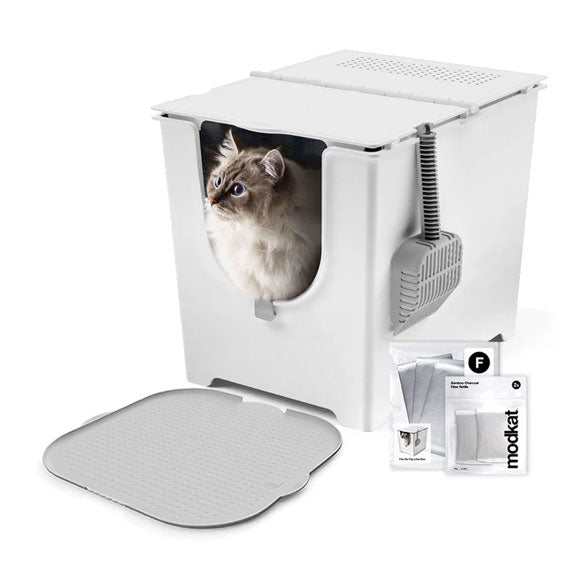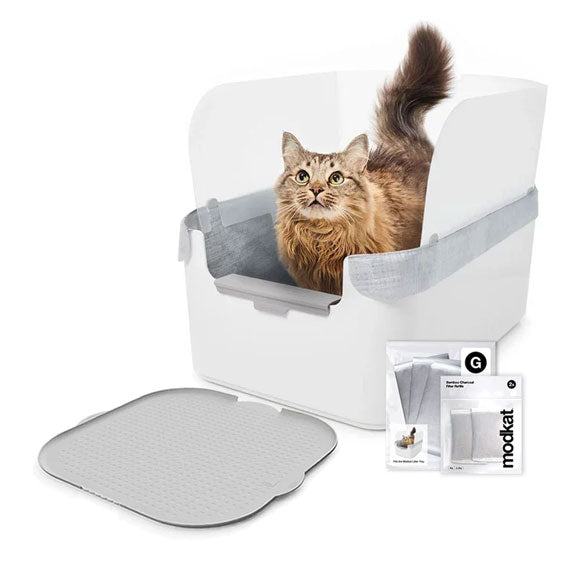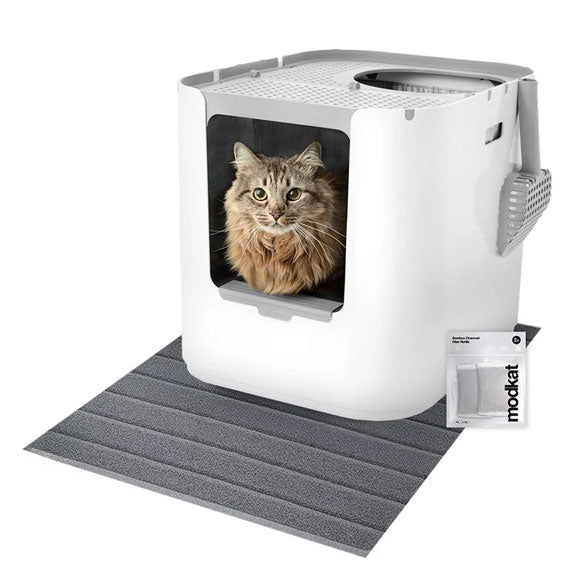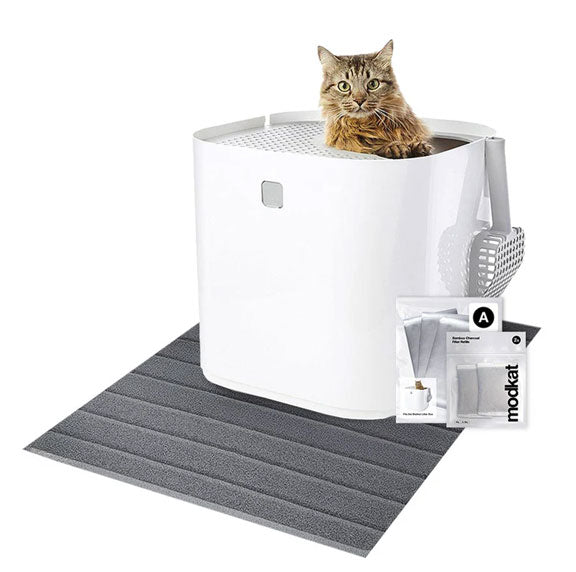20% off sitewide. Discount automatically applied.
20% off sitewide. Discount automatically applied.
Litter Boxes
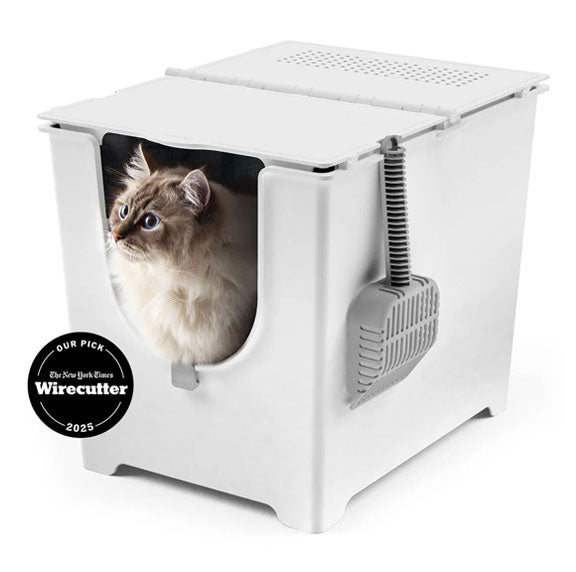
Modkat Flip
Front-Entry Litter Box
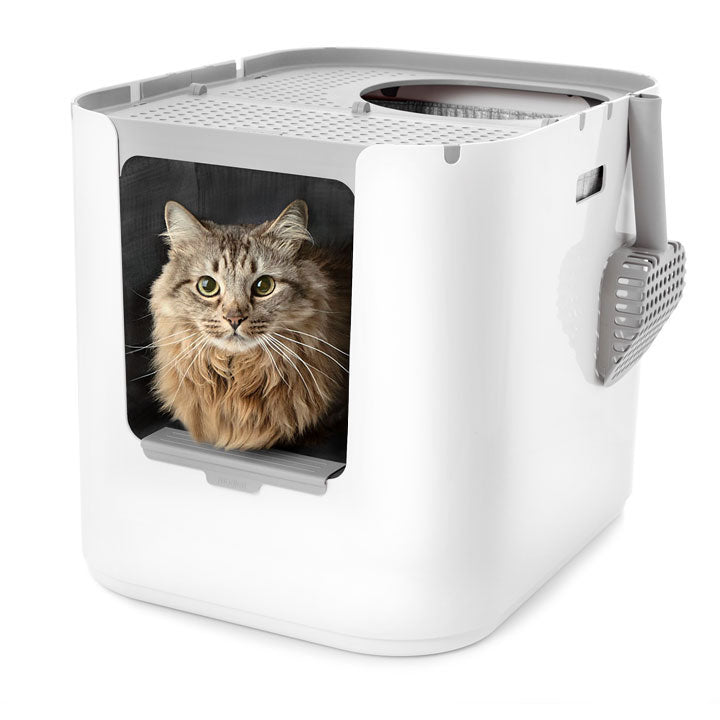
Modkat XL
Front/Top-Entry Litter Box
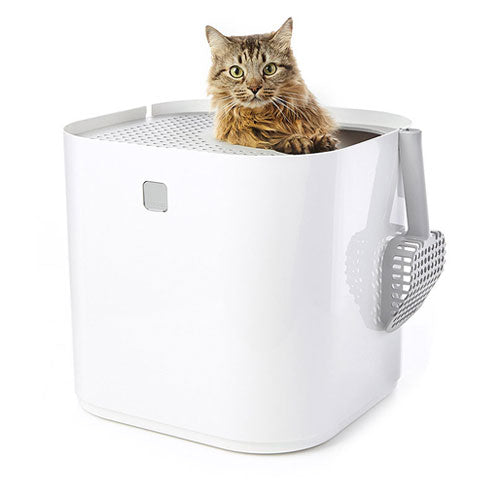
Modkat
Top-Entry Litter Box
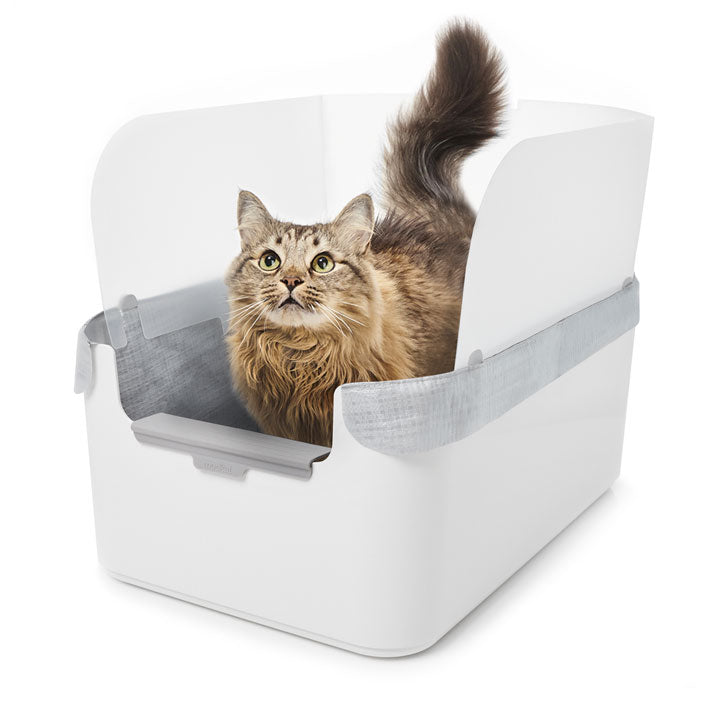
Modkat Tray
Open Litter Box
Bundles
Essentials
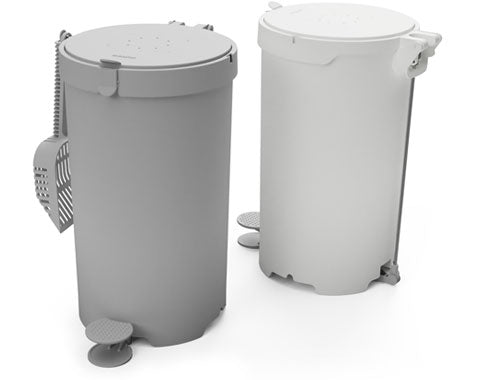
Litter Keeper
Two colors

Litter Mats
Multiple styles, colors & sizes
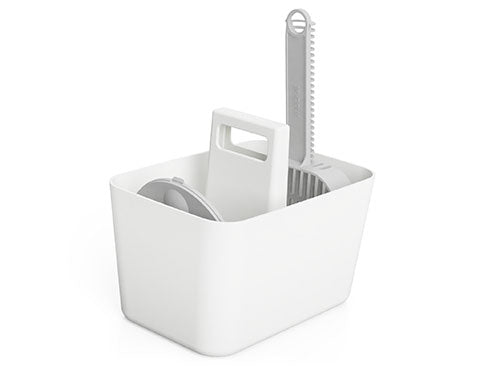
Tidy-Up Kit
Scoop holder & dustpan

Lounge + Play
Scratchers & toys
Refills
Add description, images, menus and links to your mega menu
A column with no settings can be used as a spacer
Link to your collections, sales and even external links
Add up to five columns
Add description, images, menus and links to your mega menu
A column with no settings can be used as a spacer
Link to your collections, sales and even external links
Add up to five columns
Feline bullying: how to stop my cat from bullying.
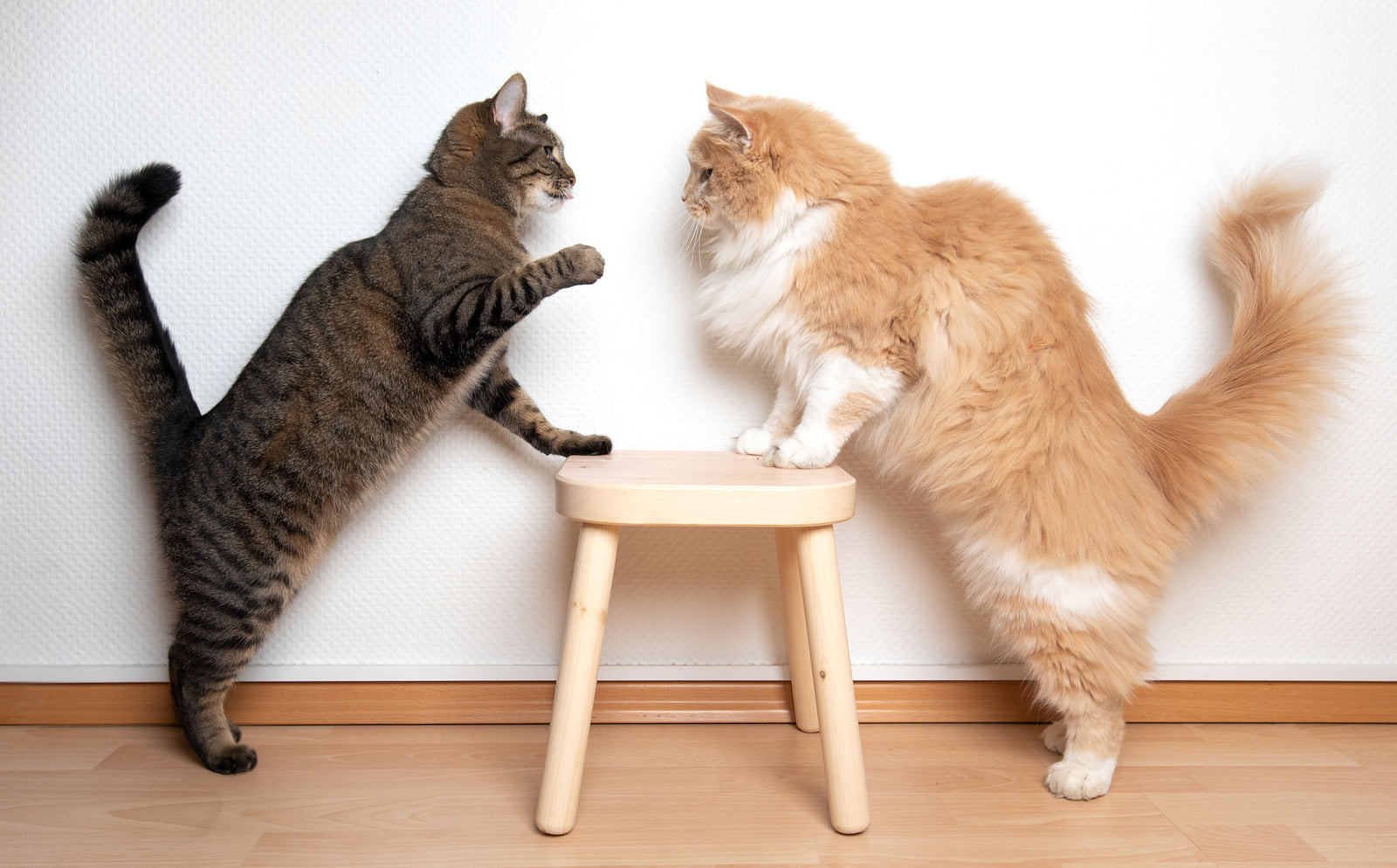
Discovering your cat is a bully can be tough. Your furry friend may be sweet and cuddly with you but can be picking on other pets in your household. This situation can be stressful for everyone.
But you’re not alone, because feline bullying is a widespread problem. About 27% of cats who come into shelters for behavioral reasons were relinquished due to aggression. It’s important to know the signs of feline bullying and ways to prevent it.
Not all bullies are aggressive, though. Cats can be passive bullies, too, making life difficult for feline housemates in sly ways. That's why it's important to recognize the signs of feline bullying and learn ways to put a stop to it.
Read on to learn more about why your cat may be showing signs of aggressive behavior and how you can stop your cat from bullying other pets.
3 signs your cat may be a bully.
Your cat is harassing or intimidating another pet in your household.
Common forms of intimidation can include hissing, growling, chasing, swatting, or attacking another animal. Couldn't this just be play? Of course it could! But if your cat is regularly picking on a weaker animal, he could be trying to establish dominance over them.
Your cat may be a bully if they are dominating the use of a shared resource, such as the litter box.
If your cat is monopolizing the litter box and preventing other cats from accessing it, you'll likely know it because the meeker cat will have to use the bathroom somewhere else.
Your cat is engaging in destructive behaviors such as scratching furniture or walls.
This type of bullying behavior is usually done to demonstrate dominance or assert authority in the household.
If you notice any of these signs in your cat’s behavior, it is important to act quickly and address
the problem. Ignoring it can lead to more serious issues and may be detrimental to your cat’s health and well-being.
What causes cats to act like bullies?
Genetics could play a role in your cat's behavior. While most undesirable behavior stems from past experiences or poor socialization, some cats might be genetically hardwired to be bullies. Part of this is simply due to breeders creating new breeds, which have not only aesthetic but behavioral differences.
Although some breeds are more aggressive than others, no cat is born a bully. Often, early life experiences contribute more to a kitten's behavior than genetics do. An aggressive mother cat, sibling, or human owner can make young cats more prone to bullying other animals. What looks like genetics might just be poor socialization.
Lack of socialization could be causing your cat to act up.
Cats who have not been exposed to other cats during the important socialization period of 2-7 weeks of age may be less tolerant of other cats and more likely to display aggressive behaviors. Older cats who have not had much exposure to other cats can also become bullies.
Regardless of age, cats who have not been socialized well may engage in bullying behaviors such as stalking, chasing, and ambushing another cat.
Fear often drives feline bullying.
Cats may become aggressive if they feel threatened or perceive imminent danger. For example, when a new cat is added to a family, the resident cat may feel uneasy and lash out if they feel their space is being invaded.
Are they bullies or are they bored?
A bored cat may bully their buddy just for something to do. This problem is easy to solve. Providing plenty of enrichment activities like toys and scratch pads can help cats expend any pent-up energy they might have, which could otherwise manifest as bullying.
Stressed cats may bully their neighbors.
Cats are sensitive animals. Loud noises, frequent changes, or lots of coming and going in your home can send your cat's stress meter through the roof. Learn to recognize signs of stress in cats before they escalate into physical altercations.
What does aggression look like in cats?
To a human, two cats playing can look a lot like two cats fighting. How can you differentiate play aggression from the undesirable kind?
Look at their body language first. A cat who is pawing at another animal with a relaxed body and ears forward is probably just playing. When the ears flatten and the body tenses up, however, watch out! You may have a cat fight on your hands.
Other signs of aggression in cats include hissing, growling, dilated pupils, swatting with claws, or even biting. A good rule is to check on the cats when the activity is over. Are they acting chummy now? Maybe grooming or cuddling each other? Then you probably witnessed active play. If they still seem wary, though, keep a close eye on the situation.
When cats fight, they usually use their claws and teeth to do so. This is why it’s important to break up any physical disputes between cats, as it can lead to serious injury. If your cat is bullying another cat, or your cat is being bullied by another, you will want to identify the problem quickly and take steps to resolve it.
How to stop your cat from bullying your other cat.
If you've figured out your cats are in conflict, it's time to put a stop to the problem — right now. Start with these three simple measures:
- Make sure both cats have adequate resources such as food, water, hiding spots, scratching posts, and litter boxes.
- Try not to give either cat preferential treatment, and allow them both equal access to resources.
- Provide plenty of opportunities for both cats to interact and play together using interactive toys like feather wand toys and treat balls.
Pro tip: Litter box disputes can be common between cats. It’s important that each cat has their own litter box in different locations throughout the house so they don’t feel like they are competing for resources. Also, make sure the litter boxes are kept clean and that there are enough litter boxes for the number of cats in your home.
Often, these interventions can help solve your problems. Sometimes, however, you need to dig a little deeper, so to speak, into what's really going on.
More ideas for ending feline bullying.
Cats often bully one another out of anxiety, fear, or stress. The best way to stop one cat from bullying another is to be proactive and address the underlying causes. Here are some tips on how to stop your cat from bullying your other cat:
- Establish separate feeding spots – To prevent territorial disputes over food, make sure both cats have their own separate food bowls in separate locations. This will help reduce the chances of a power struggle between the two cats.
- Provide plenty of litter boxes – To avoid arguments over the litter box, provide each cat with its own litter box in a quiet and private area.
- Supervise interactions – It’s important to supervise interactions between cats to be sure one isn’t dominating or bullying the other.
- Create multiple spaces – If your cats are feeling crowded in one room, create multiple spaces by adding extra furniture and scratching posts. This will give the cats more territory to explore and feel secure in.
- Plug in pheromone dispensers — Pheromones are chemicals that each species uses to communicate within its own species. You can purchase a cat-specific pheromone dispenser from a pet products retailer. These help reduce stress-related feelings.
- Reward good behavior – When cats interact peacefully with each other, make sure to reward them with treats and praise. This will help reinforce positive behaviors and create stronger bonds between cats.
- Avoid punishing bad behavior – Punishing cats for bullying one another can lead to fear and anxiety. Instead, focus on addressing the underlying issues that are causing the aggressive behavior.
- Let cats work it out – In most cases, cats can work out their differences without human intervention. However, if one cat is constantly bullying the other, you may need to intervene by using techniques such as positive reinforcement or systematic desensitization.
If your cat is showing aggressive behavior towards other cats or animals in the home, you may want to consider a behavior modification program with a certified animal behaviorist to help modify your cat's behavior. Techniques such as desensitization and behavior modification can help teach your cat to become comfortable in situations that might have previously been difficult or even impossible for them.
Systematic desensitization
Systematic desensitization involves gradually introducing new cats to each other and using positive reinforcement to reward calm behavior.
The process begins with setting up the litter box for each cat in a separate room. Each room should be equipped with a scratching post and toys to encourage positive interactions. Once the cats are comfortable in their own spaces, they can be introduced slowly and carefully. Allow them to sniff each other through the door and play with toys together while supervised.
Provide treats and rewards when the cats interact calmly, like taking turns grooming each other or lying side-by-side. If you start to see signs of aggression, such as hissing or growling, separate the cats immediately and try again the next day. Keep rewarding peaceful behavior until the cats no longer act aggressively toward each other.
With enough patience and perseverance, you can help stop your cat from bullying another cat in the house and create a peaceful environment for everyone!
Behavior modification
One of the most effective methods to stop cat bullying is to modify the behavior of the bully. You can do this by providing positive reinforcement when they behave in a way you want them to and avoiding any type of negative reinforcement.
For instance, if your cat is bullying another cat over the litter box, don't punish them for it. Instead, provide them with a safe place to relieve themselves. Make sure there is at least one litter box for every cat in your household, as well as one extra. That way, you can help prevent territorial disputes from occurring in the first place.
You can also give your cats treats when they use the litter box without any issues. This will create a positive association and encourage good behavior. Additionally, try to provide plenty of toys and places to explore so that your cats can express their natural curiosity and keep them away from trouble.
Finally, avoid shouting at or hitting your cat if they display aggressive behavior towards other cats or animals. This will only make matters worse and may actually cause more aggression in the future. Instead, reward good behavior with treats and love.
If you've got an active cat fight on your hands, the best thing to do is to make a loud noise like clapping your hands or banging on a pot to scare them apart!
How to stop my cat from bullying my dog
It can be heartbreaking and frustrating to watch your cat bullying your dog. It's also mind boggling. After all, dogs are bigger than cats, and they usually sport stronger jaws and paws. So why is your dog letting your cat bully him?
Like many social problems, the answer is found by looking into the past. Your cat's ancestors worked primarily as solitary hunters. Ancient dogs, however, had a much more complex social order. A few dogs ruled from the top rung, and others sat near the bottom.
Consequently, all cats are natural predators, and some dogs are natural prey. While a few cats may be territorial and simply don’t like other animals invading their space, other cats may feel threatened by the presence of a dog. They might even be vying for dominance over them. In some cases, cats may see the dog as competition for your affection.
If your cat is bullying your dog by chasing him, swatting him, or even attacking him, it’s important that you address the behavior immediately. You can try to redirect your cat’s attention with toys or treats when the dog is nearby. You can also keep your cat's food bowl and litter box away from your dog. A covered litter box can help prevent your dog from aggravating your cat when she's doing business.
Start using behavior modification techniques to help teach your cat that bullying is not acceptable. When you witness your cat displaying aggressive behavior towards your dog, immediately remove it from the situation and place it in another room. This may help your cat understand that bullying is not tolerated and show them that they won’t get any attention from you if they engage in this behavior.
Finally, consider systematic desensitization. This technique involves slowly introducing your dog and cat to each other in a controlled environment so they can learn to coexist peacefully. Start by having both animals in separate rooms and gradually increase the amount of time they spend together while providing plenty of rewards for good behavior. With patience and consistency, you can eventually help them learn to get along.
Cats are sweet, intelligent creatures who want to love and be loved back. Some cats, like some people, just need extra help expressing their feelings in a positive way. If your kitty is one of these, it's important to know that you can help nurture them into a happy, healthy cat.
Shop the Modkat litter boxes and accessories to help keep your kitty feeling safe, secure, and entertained.
“It looks nicer than any other hooded or open option we considered.”

Categories
Meow from Brooklyn.
Sign up and get early access to product drops, exclusive offers, and the occasional cat meme.
Similar products related to this blog:
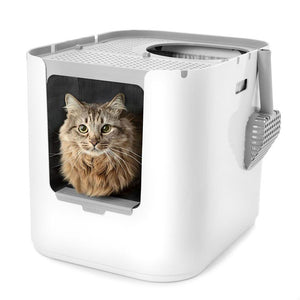
"It looks nicer than any other hooded or open option we considered."

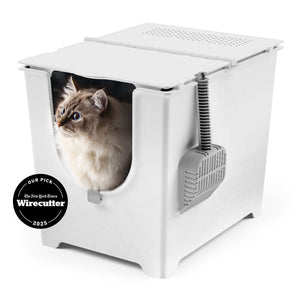
"This litter box keeps everything in, nothing gets out the sides."
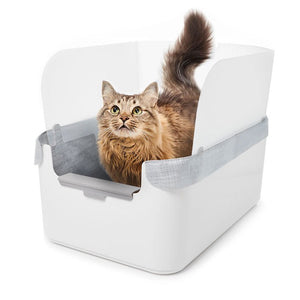
"My beautiful ragdoll cat and I both love the new Modkat Litter tray!"

